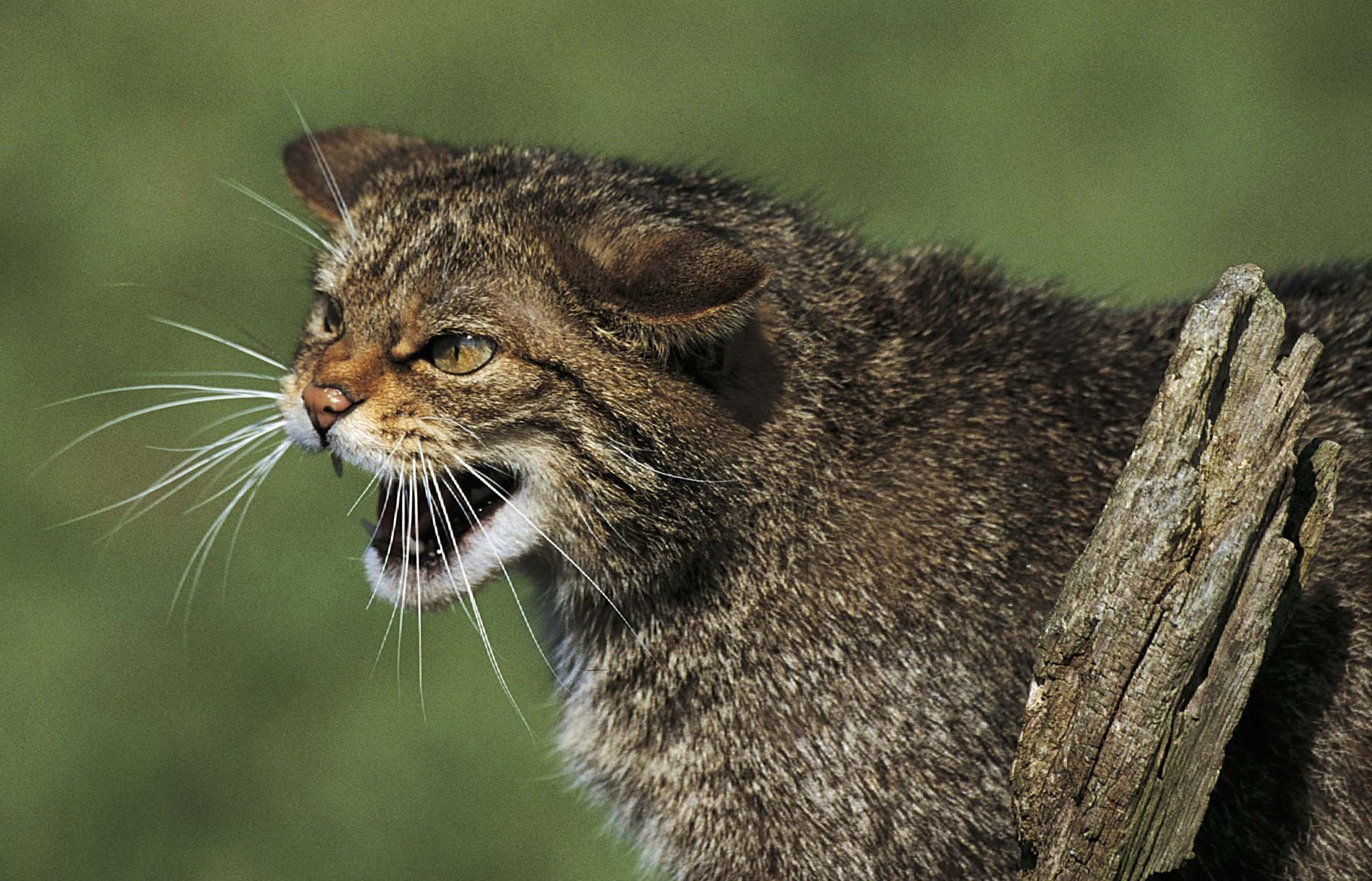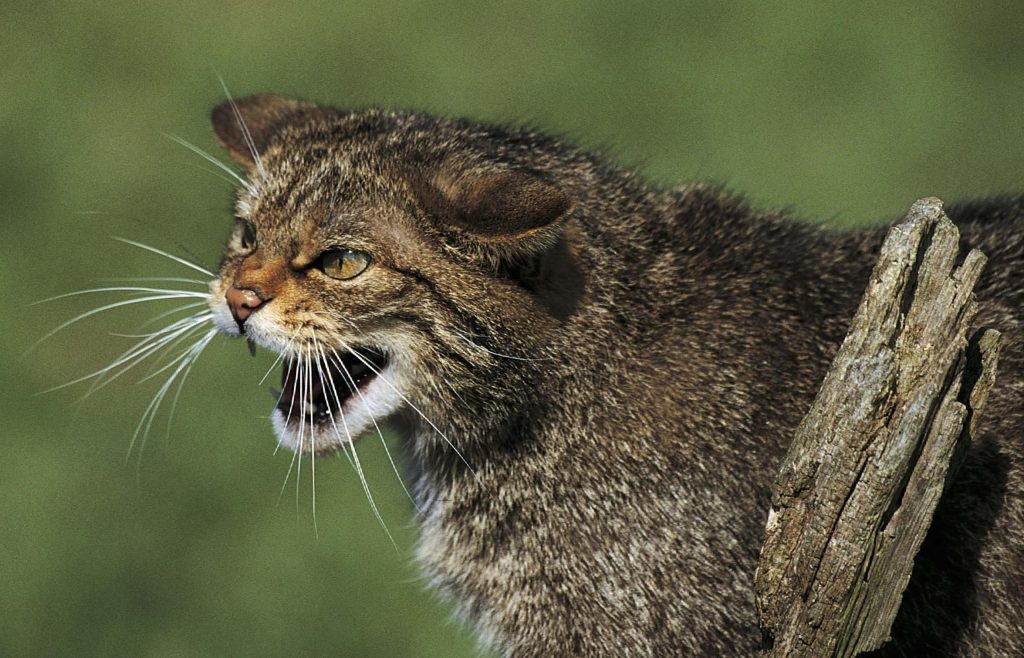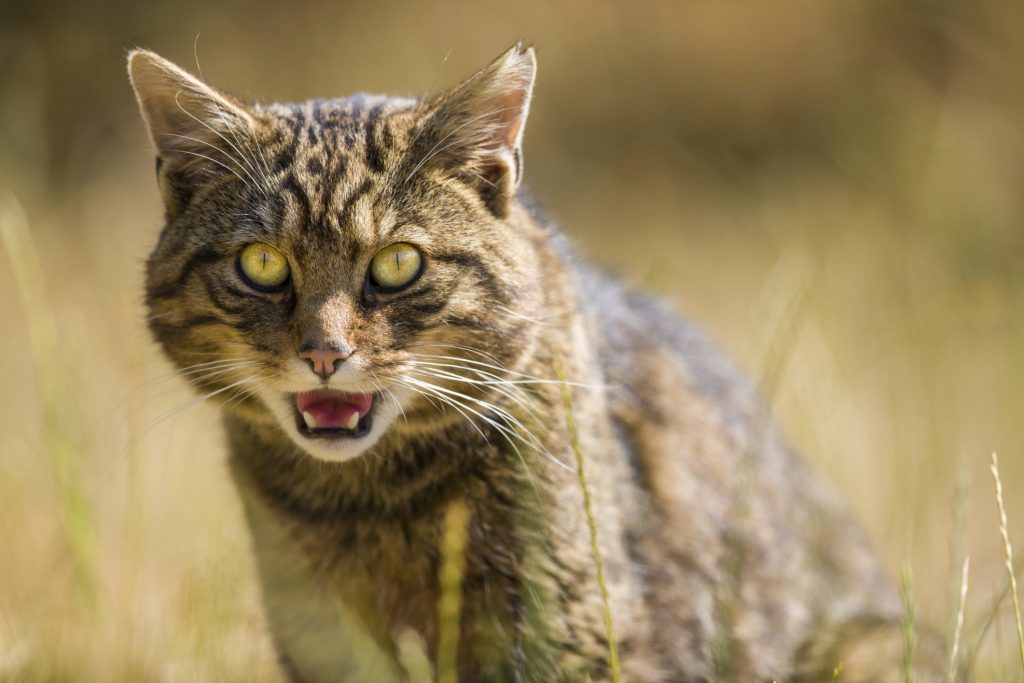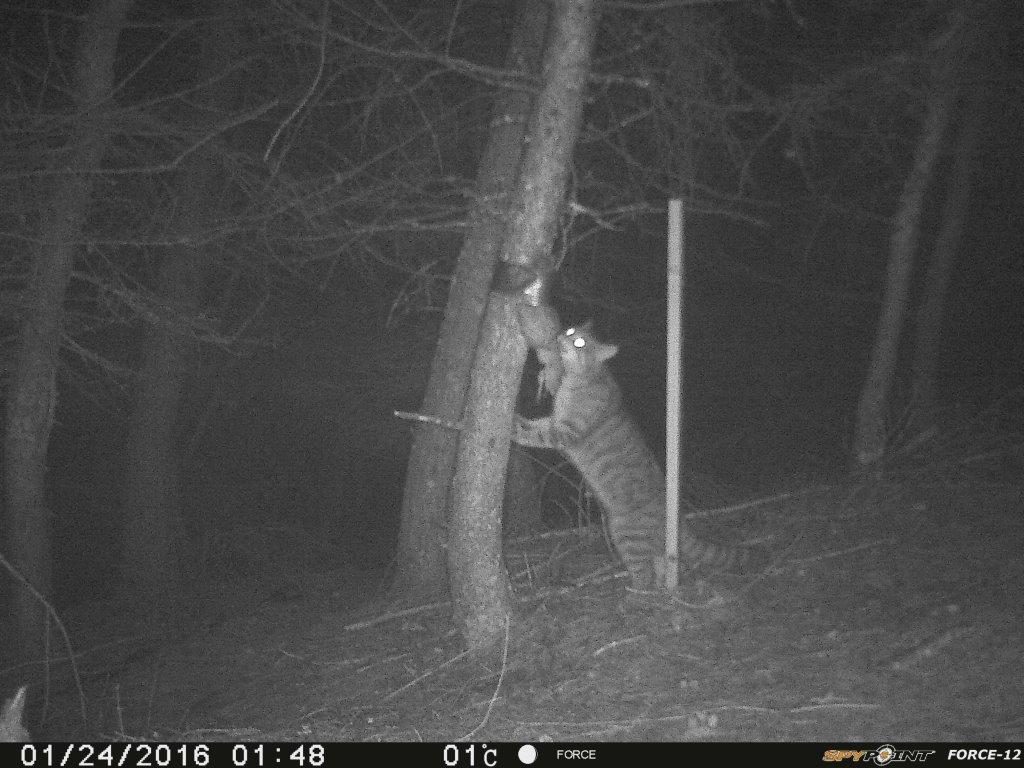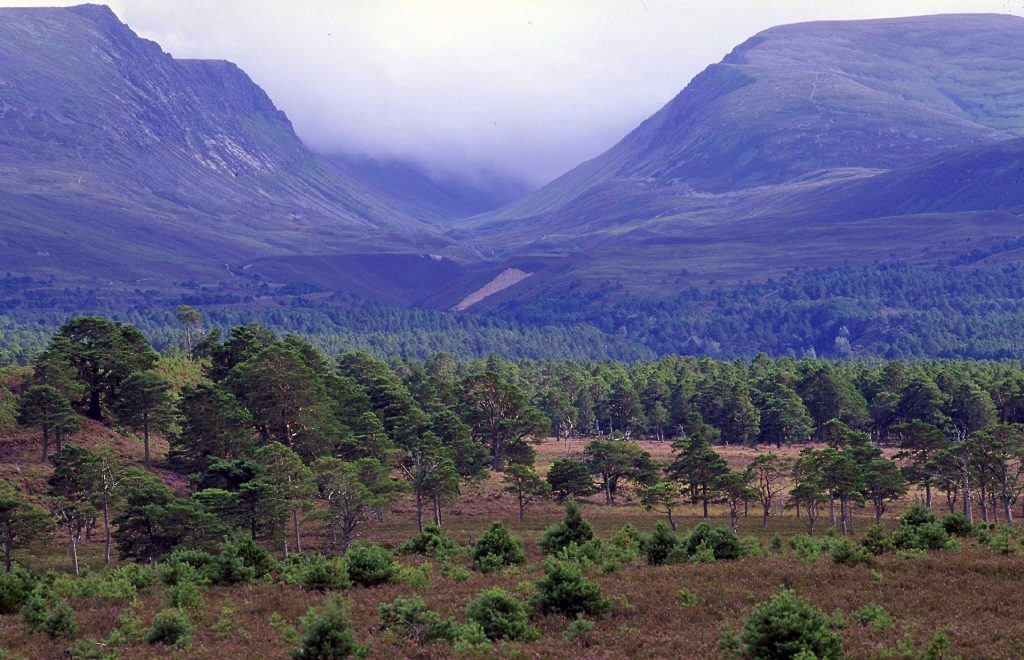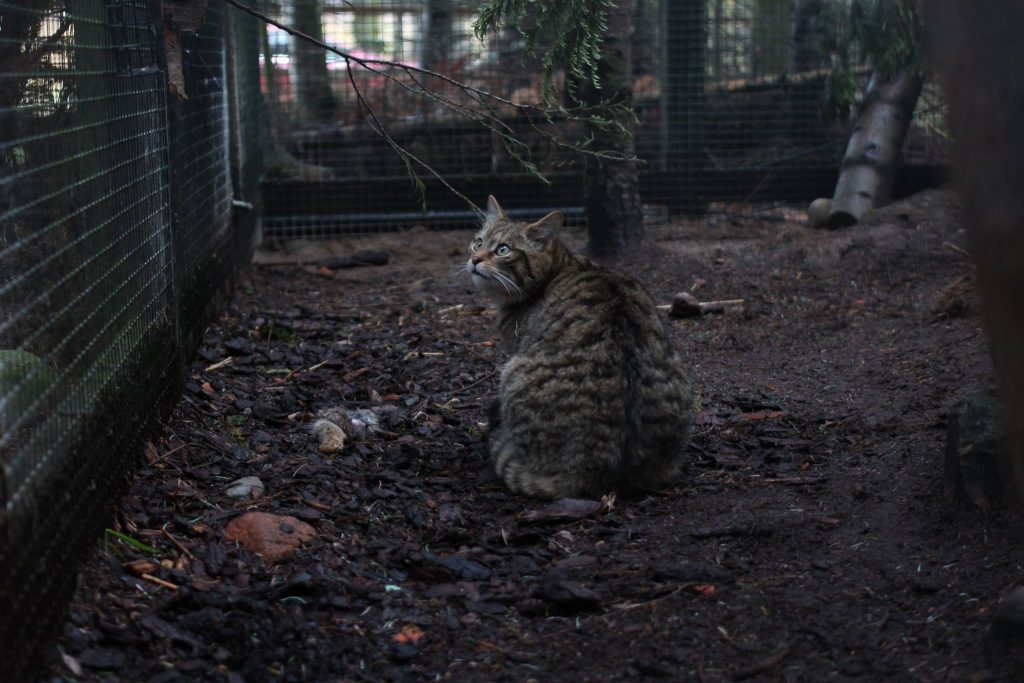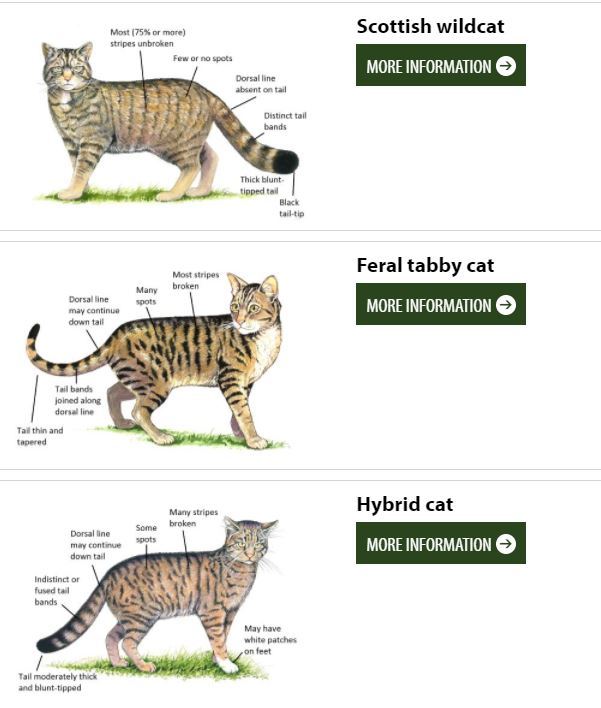Arguably the country’s most iconic species, the Scottish wildcat is critically endangered and faces the very real threat of extinction.
However organisations and volunteers across the country are fighting to save the native predator, which has been blighted by the decline of its natural habitat and interbreeding with domestic cats.
The Courier has compiled everything you need to know about the remarkable and incredibly elusive “Highland tiger”.
Status
Scottish Wildcats are a European protected species under UK law.
How many Scottish wildcats are there out there?
No-one actually knows for sure how many are left in the wild. The most recent population estimates range from between 100 to 300, whilst others claims there are less than 50 left. As the animals are so elusive, it is hard to give a reasonable assessment.
A history of persecution
Scottish wildcats were once hunted for their fur, with deforestation also killing off many. They came close to being wiped out during World War I when persecution on Scots shooting estates was rife.
Wildcats and Scotland: A tied history
The animals are closely tied to Scotland’s feudal past. The title of the chief of Clan Sutherland is Morair Chat, which means “great man of the cats”. There is also a cat on their clan crest and their motto is “without fear”. Caithness was once known as Caitaibh or the “land of the cats”. Clan Chattan is also closely tied to the animals. Their motto is “touch not the cat bot (without) a glove”.
They are truly wild
Pure-bred wildcats are said to be untameable. Even those raised by humans as kittens will grow up wild and fierce, and can never be tamed. Many believe their distinctly Highland spirit is what makes the animals such a wonderfully Scottish beast.
How do they size up?
Historically wildcats have been recorded as being up to 4ft long and weighing 13kg. However modern estimates are that they are typically 25% larger than ordinary cats and weigh between 5kg and 8kg. They have huge thigh muscles, allowing them to sprint at up to 30mph.
They are built to kill
Wildcats have nocturnal vision, large retractable claws, sharp teeth and extremely strong jaw muscles which they use to kill prey. Wildcat hearing is incredible. They are capable of independently rotating each ear through 180 degrees. They usually kill instantly by a swift bite to the neck.
What do they eat?
Wildcats in the east prey on much larger mammals than domestic cats, such as rabbits. Voles and mice make up much of the diets of the animals in the west of Scotland. However they are also known to eat birds, reptiles and invertebrates.
How do they survive in the wild?
They have to spend between seven to nine hours hunting every day in order to survive, and do so both during the day and by night. Wildcat coats are 50% thicker than those of domestic cats. In the winter, they move to avoid areas with heavy snow.
What habitat do they prefer?
Their preferred habitat is woodlands and moorlands usually in the vicinity of mountains, though they do not venture much higher than altitudes of 650m. They are known to create dens in rock cairns, piles of logs and among tree roots; often moving into empty rabbit warrens, fox dens and badger setts.
Where in Scotland are they?
There are strongholds in the Cairngorms National Park, the north-east, Easter Ross, Speyside, Inverness-shire, Ardnamurchan, Morvern and parts of Perthshire and Argyll.
What is the lifespan of a wildcat?
Studies have revealed that only 7% of wildcats live longer than six years in the wild, with females living up to a maximum of 10 years and males up to eight years. In captivity they have been recorded as living up to 15 or 16 years.
Why are they under threat?
Interbreeding
Interbreeding with both pet and feral cats, leading to hybridisation, is the major factor in the risk of wildcat extinction. Many organisations run “trap– neuter–return” programmes targeting feral cats. Scottish Wildcat Action is also encouraging people to turn their pets into “supercats” in order to help save their wild cousins.
Disease
Contact with feral and domestic cats exposes the Scottish wildcat to novel diseases. These can often be treated easily on ordinary cats, but can prove fatal to their wild cousins.
Habitat loss
Decline of wildcat habitat is also a factor in their numbers being so low. Deforestation has led to wildcat groups being isolated from each other, having a knock-on impact on breeding habits.
Persecution
Until as recently as 1988, 92% of wildcat deaths were put down to hunting. They are also at risk of being killed on roads.
How do you identify a Scottish wildcat?
Here is how you can tell a wildcat apart from a hybrid or domestic one:
- Its black stripes remain unbroken on its fur.
- It will have no white feet.
- Its tail is thick, ringed and bushy, and it will have no stripe down its tail.
- It will also have few spots on its fur, or none at all, and a black patch at the tip of its tail.
How to identify a Scottish Wildcat. Diagram courtesy of Scottish Wildcat Haven.
How can I help save the wildcat?
Have your pet cat neutered and vaccinated. Report any feral cats in the vicinity of anywhere you suspect wildcats to be. Support organisations fighting to save the species. Report any possible illegal activities relating to wildcats.
